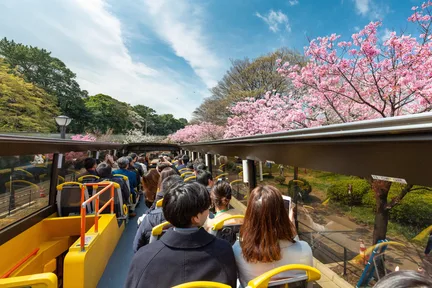Yasukuni Shrine
The best of Yasukuni Shrine
Bucket-list experiences
Make it a getaway
Trouble-free transport
All that's good & tasty
More to explore
Why people love Yasukuni Shrine
Nearby places to go
FAQs about Yasukuni Shrine
What is the best time to visit Yasukuni Shrine in Tokyo?
How can I get to Yasukuni Shrine using public transportation?
What should I know about visitor etiquette at Yasukuni Shrine?
What to know before visiting Yasukuni Shrine
Remarkable Landmarks and Must-Visit Sights
Yūshūkan Museum
Step into the Yūshūkan Museum, the world's oldest military museum, where history comes alive through an impressive collection of artifacts, including a Zero Fighter plane. This museum offers a profound journey into Japan's military past, providing visitors with a deeper understanding of the nation's wartime history and the personal stories of those who served.
Haiden (Hall of Worship)
Discover the Haiden, the heart of Yasukuni Shrine, where tradition and reverence meet. Built in 1901, this main prayer hall showcases exquisite Japanese architectural styles and serves as a central point for worship and ceremonies. Visitors are invited to pay their respects and experience the spiritual ambiance of this sacred space.
Cherry Trees
Experience the breathtaking beauty of Yasukuni Shrine's cherry trees, a highlight for visitors from around the globe. As the official herald of Tokyo's cherry blossom season, these trees transform the shrine grounds into a stunning landscape of pink and white blooms, offering a perfect backdrop for reflection and photography.
Cultural and Historical Significance
Yasukuni Shrine is a site of profound historical importance, commemorating over 2.4 million individuals who died in service of Japan. It includes those from the Boshin War, Sino-Japanese Wars, and World War II, among others. The shrine's role in Japan's national identity and its controversies make it a focal point for understanding the country's modern history. It stands as a testament to Japan's complex history, commemorating those who died in service to their country. It serves as a focal point for discussions on the separation of church and state, especially given the enshrinement of class A war criminals and the political implications of official visits.
Annual Festivals
The shrine hosts several annual festivals, including the Shunki Reitaisai in spring and the Shuki Reitaisai in autumn. These events are marked by traditional ceremonies and are a vibrant display of Shinto practices.
Historical Significance
Yasukuni Shrine, originally named Shokonsha, was established in 1869 and renamed in 1879. It serves as a memorial for those who died in service to Japan, reflecting the country's complex history and the enduring spirit of its people.




